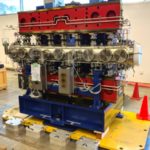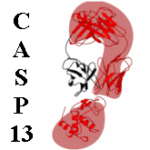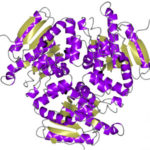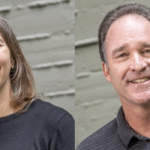A critical component of the planned state-of-the-art macromolecular crystallography beamline Gemini has arrived at the Lab. The specially-designed in-vacuum undulator insertion device will yield higher photon flux compared to the Advanced Light Source’s superbend magnet and wiggler sources, bringing solutions to some of the most challenging projects in structural biology within reach.
Women @ The Lab Awards
Six Biosciences employees have been selected by the Women Scientists and Engineers Council (WSEC) and the Diversity, Equity, and Inclusion (DEI) Office for recognition as part of the third Women @ The Lab awards. The program spotlights women at the Lab who demonstrate dedication, talent, STEM contributions, and commitment to the Lab’s mission.
Berkeley Lab Bioscientists Participate in CASP13
CASP is the Critical Assessment of Protein Structure Predictions, a biannual “competition” to determine which prediction algorithm generates the most accurate model. There are several categories in which models will be assessed, including accuracy, topology, and biological relevance. The SIBYLS beamline is participating to provide small-angle X-ray scattering (SAXS) data for––and judging for the first time––the “data-assisted” category. This CASP competition should lead to improvement in predicting protein-protein interfaces and complex structures.
ALS Passes the 7000-Protein Milestone
The Advanced Light Source hit a structural biology milestone in May 2018 with the help of their eight structural biology beamlines. Users of these beamlines have now collectively deposited over 7000 proteins into the Protein Data Bank (PDB), a worldwide, open-access repository of protein structures. The 7000th ALS protein structure (PBD accession number 6C7C) is an enzyme from Mycobacterium ulcerans (strain Agy99), solved with data from Beamline 5.0.2 in the Berkeley Center for Structural Biology. The enzyme is of interest to the researchers from the Seattle Structural Genomics Center for Infectious Disease (SSGID), whose mission is to obtain crystal structures of potential drug targets on the priority pathogen list of the National Institute of Allergy and Infectious Diseases (NIAID). Beamline 5.0.2, the first protein crystallography beamline at the ALS, came online in 1997. Read more in the ALS Feature.
CinderBio Founders Among New Cohort of Cyclotron Road Fellows
Jill Fuss and Steve Yannone, both research scientists in Molecular Biophysics and Integrated Bioimaging (MBIB), are among the 13 scientists and engineers who comprise the fourth cohort of Cyclotron Road fellows. The pair co-founded CinderBio, a spin-out company that uses extremophile microbes to produce industrial enzymes that can withstand very high temperatures and acidic environments.
- « Previous Page
- 1
- …
- 42
- 43
- 44
- 45
- 46
- …
- 78
- Next Page »
Was this page useful?








